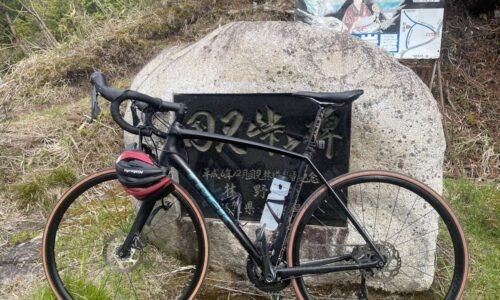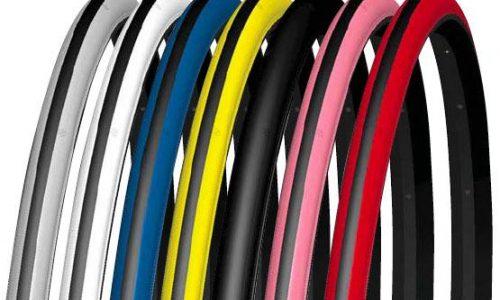Tires can be confusing when you are new to the world of road bikes. You can ask people, and all you will get is tired old clichés, the pun was slightly intended. If you don’t get clichés, you will get personal opinion masquerading as gospel. Neither of these options is helpful, so we are going to break the world of tires down for you.
Generally, when you talk about tires for road bikes, they will be described as one of 3 categories and to further confuse things one of these categories is part of another one. You have tubular, clincher, or tubeless.
Tubeless is technically a clincher, but most people think about clinchers having tubes. Much like how aluminum bikes are alloy, ignoring the fact that steel is also an alloy. Cycling is beautiful like that.
Tubular Tires

Let us start with tubular tires. Tubulars tires have a myriad of regional names. If you are in the US, you will call them sew-ups, in the UK tubs, and in Australia, you might hear talk of a single. Some of these names give you a clue about the construction of tubular tires.
A tubular is a tire that has been stitched closed around a tube. Now you can see where some of the names originated. Essentially your tire is sewn in place. You would then either glue or tape your tubular to your wheel. The wheel design will be tubular specific and will not have the hook needed for fitting clincher tires.
Tubular tires as they do not have the bead that clinchers have are generally lighter than clincher tires and feel more supple when you are riding. It is hard to quantify the ride difference other than you can tell when if you are riding clinchers or tubulars.
Punctures can be an interesting story with tubulars. If your tubular gets punctured it is pretty labor intensive to fix, and in some places, you may have to post your tire away to get it stitched up again.
The flip side to this is that tubulars being a closed system means that they lose air slower than a clincher when punctured.
You can usually hobble home on a punctured tubular rather than spending 10 minutes at the side of the road fixing your tire. You are also less likely to get pinch flats with tubulars over clincher tires, again this is thanks to the construction method.
Tufo is a brand that is famous for making tubular tape and glue. They also have a fantastic range of tubular tires. Their S3 Lite is a particularly great example of a tubular tire. It is highly puncture resistant and is very light. It can also take high pressures up to 220 psi.
Clincher Tires

Clincher tires have become the standard tire over time. They are the style of tire we all know and love. The reason this style of tire is called a clincher dates back to before tires had a steel or Kevlar beads to their edge. The tire would be pumped up to pressure and would clinch onto the edge of your wheel.
Now we use steel and Kevlar beads which interlock with a flange on your wheel rim. As you inflate your tires, this bead then locks, rather than clinches, the tire in place. As cyclists love history, we kept the old name for these tires.
One of the arguments you will be told for the benefit of tubulars over clinchers is that they have lower rolling resistance. The reason for this is because of the thicker sidewalls and bead that you find on clincher wheels.
It is why tubulars will feel more supple. You now though have a new generation of road clincher tires that are trying to change that.
The new Continental GP5000 offers 12% less rolling resistance than its predecessor, the GP4000. The GP400 was our go-to road bike tire for many, and now we have a faster version, it only makes sense that it is our favorite clincher tire.
Punctures on a clincher mean that you are probably going to have to get off your bike and fix it, rather than trundling home. The good thing here is that you can fix a puncture by yourself and be back on the road in minutes and still able to go at full speed. You don’t need to send your tire or tube off to some distant artisan to get it fixed.
Tubeless Tires

Tubeless tires are here, and the bike world’s media wants you to know about it. Most mountain bikers will be running tubeless tires as they have had them for years. Now, it is the road bike’s world to try them out.
Tubeless can be thought of like a mix of tubular and clincher pros. You have no tube to fit, and you do not have to glue or tape your tire to a rim. Tubeless tires fit in the same way as clincher tires.
You do need to make sure you have a tubeless ready rim though. It will make the job of fitting tubeless tires that much easier.
One of the best reasons to go tubeless is that when you set your tires up, you can put some sealant inside the tire. The sealant will not only help to keep the air in your tires but will also fill up punctures and seal the gap.

You might not even know you had a puncture till the next time your check your tires and see the tell-tale sign of a little bit of white that marks a puncture.
The other major advantage is that they can be more aero than tubulars, this bit also goes for standard clinchers. As aero wheels are all moving towards a wider blunt aero profile, you will find that tubeless tires and clinchers allow for a smoother transition than you get with tubulars, especially if you fitted your tubulars with tape.
To go with this wide aero shape, we are also starting to see that science shows running them with a 25mm wide tire is your best option for speed. The next thing we can see that is dropping the pressure down to 80 psi doesn’t affect this speed.
The best thing going to 80 psi does though is it brings you comfort, it also brings you enhanced grip, but I always feel after a long day in the saddle I preferred the comfort. There is a problem for clinchers with going to 80 psi, it easy to puncture them at that pressure.
If you puncture your tubeless tire, the chances are you won’t notice as the hole will have sealed. You are also likely to get pinch flats as well at this pressure with clinchers. Again this is not a problem for tubeless tires as you have no tube to get pinched.
The Schwalbe Pro One has to be our favorite choice for a tubeless road tire. Personally, I would go for the 25mm version for that little bit of comfort while still allowing me to go full speed. They are also one of the best fitting tubeless tires that I have tried.
Conclusion
A few years ago the tire game was wide open but with the new science coming out, the comfort, and the practicality I can only see tubeless tires coming to dominate the road cycling landscape. If you are skeptical of them, borrow a set of wheels with tubeless tires and experience the joy of tubeless for yourself.
I’ve spent way more time in the bike trade than anyone should reasonably want to. In that time I’ve wanted to make cycling jargon and marketing easier to cut through to help people get the bike of their dreams.
When I’m not writing about bikes, I can be seen out bikepacking on single speed bikes or teaching kids how to ride.


